
Zoo InternQuest is a seven-week career exploration program for San Diego County high school juniors and seniors. Students have the unique opportunity to meet professionals working for the San Diego Zoo Wildlife Alliance, to learn about their jobs, and then blog about their experience online. Follow their adventures here on the Zoo’s website!
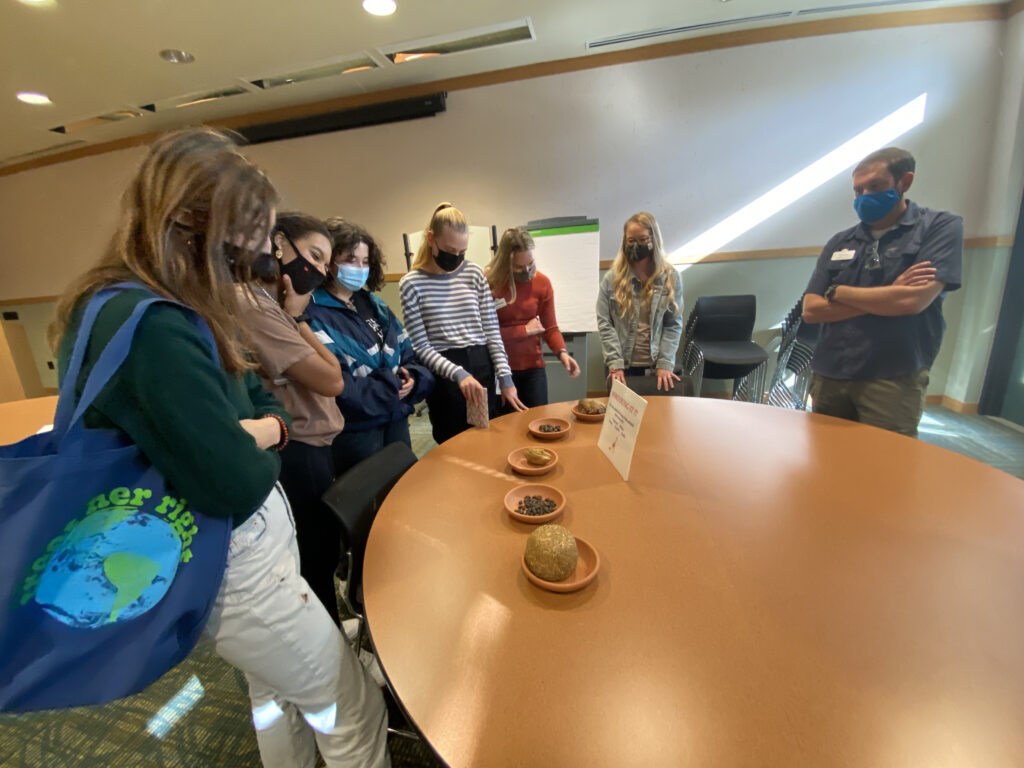
Week five of Zoo Internquest brought the interns to the Beckman Center for Conservation Research--a home base for the operations and administration of a multitude of research groups that gather scientific knowledge and carry out research vital to the conservation of animals, plants, and habitats. One of those research groups involves the Reproductive Sciences team. There, interns met with Chris Tubbs, the Associate Director of Reproductive Sciences, and Rachel Felton, the Research Laboratory Manager in Reproductive Sciences. Together they toured the interns around the Beckman Center, describing the key role they play in conservation. They explored the different laboratories they work in, even showing off the Frozen Zoo-a really interesting surprise to the interns!
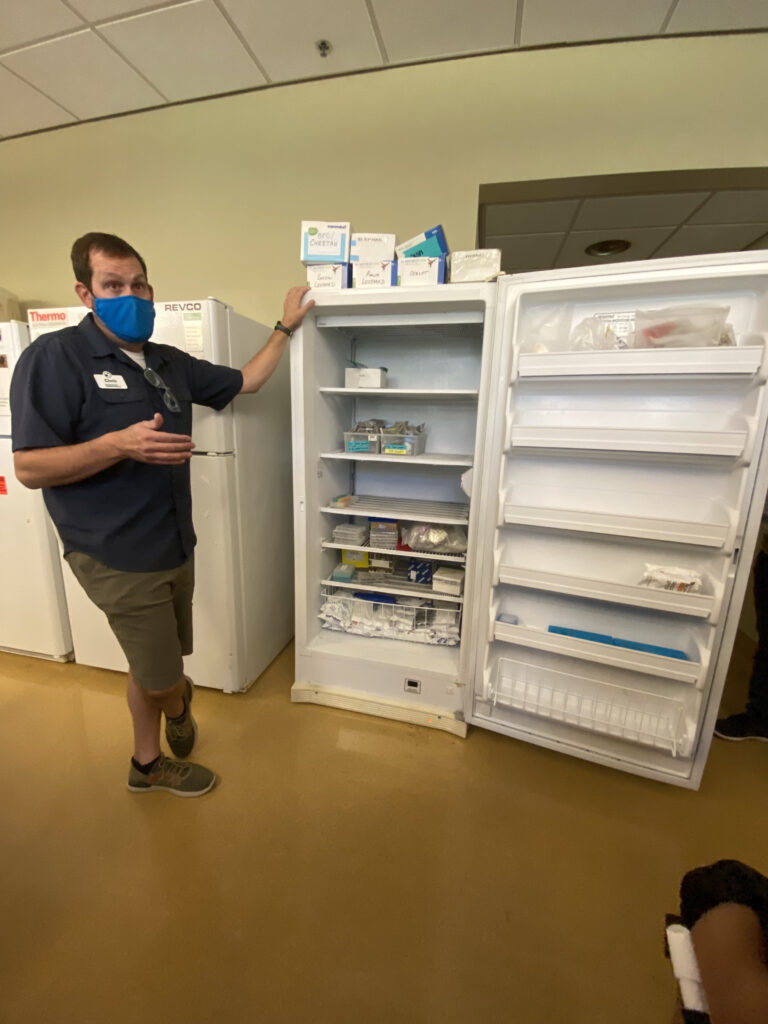
The passion Dr. Tubbs and Mrs. Felton have nurtured throughout their careers is unparalleled. Dr. Tubbs credits his inspiration for getting involved with wildlife conservation to his first day of general biology at the University of Florida. He graduated high school wanting to be a veterinarian but his freshman year professor told great stories about his time doing hands-on research with alligators in the Florida swamps and marshes. Dr. Tubbs then realized that research was something he was interested in pursuing. After expressing this, his professor gave him the opportunity to join him on his research trips, which he of course jumped at. The same professor helped expose him to the world of conservation, leading him to a major in zoology and a PhD related to fish reproduction from the University of Texas. When it came down to starting his career, Dr. Tubbs had one requirement: a job he loved doing, which included research and paid travel. In 2007, he found a position which offered both at the San Diego Zoo Wildlife Alliance (SDZWA). True to his second wish, he was given the chance to travel to South Africa to do more hands-on research with rhinos in 2018. Mrs. Felton has a very different story. She currently holds the position of Lab Manager of the endocrine lab for the Reproductive Sciences group. She said that growing up she had always loved visiting her local zoo. Mrs. Felton started her academic career at Missouri State University, studying animal science. After her studies, she found work and internship opportunities at the Dickerson Park Zoo in Springfield, Missouri. She also spent time with the Reproduction Sciences group at the Beckman Center as a part of the Summer Student Fellowship program. She returned to Missouri to finish up her goal of getting her masters degree and found work as a veterinarian technician. When a permanent position opened with the Reproductive Sciences group she returned and officially started in 2011.
Dr. Tubbs explained that in high school studying was never a problem; subjects and knowledge came easily. When he got to college it was an awakening for him. He realized he would need to work harder to attain his doctorate. He joked that he wishes he had chosen to study instead of playing pickup basketball. Dr. Tubbs urged us to develop good study habits and learn discipline to help become successful in college. He also expressed that it is ok to switch majors to determine where your passion lies. He explained to us the importance of internships or work in the field that you are interested in. By experiencing the work you have to accomplish, you get a better perspective on the career path you wish to pursue.
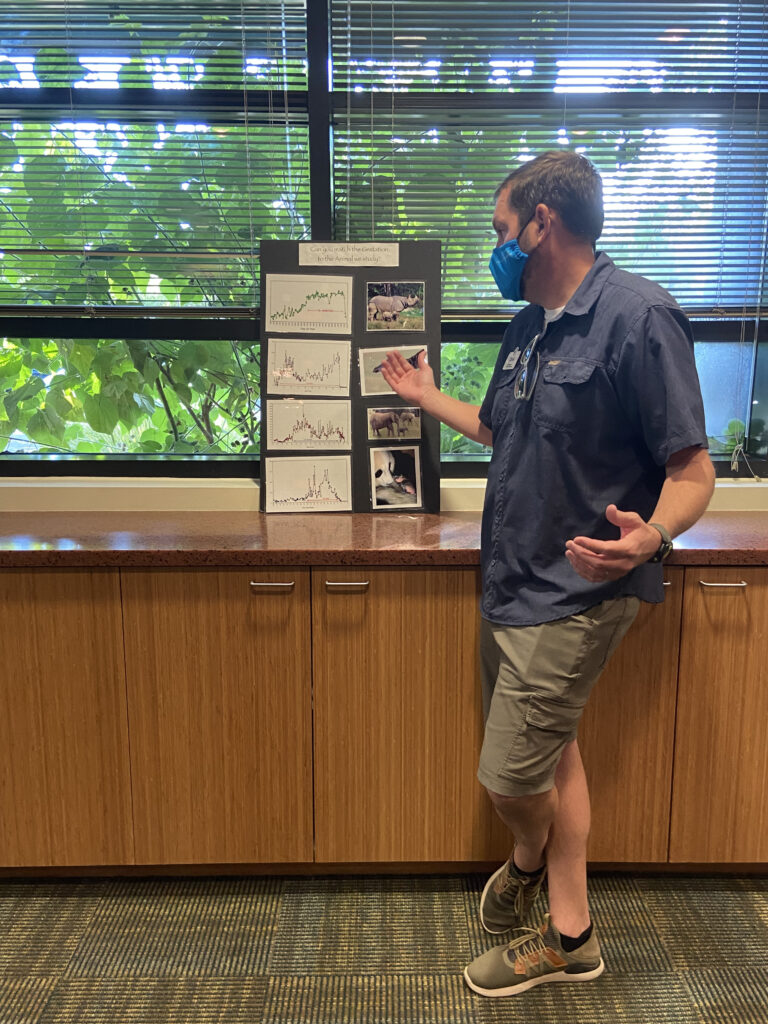
Due to their tight-knit group, Dr. Tubbs’ and Mrs. Felton’s positions intertwine often. Together they oversee three basic endeavors in regards to the wildlife they work with. The first is cryopreservation, in which they freeze tissue taken from certain animals at about -200 degrees celsius in liquid nitrogen, putting the cells in what Dr. Tubbs described as “a state of suspended animation” where the cells, while frozen, could be revived and continue on with life if needed. This collection of frozen tissue cells is also called the Frozen Zoo. The next subject they oversee is the collection and utilization of reproductive tissues in order to develop more efficient techniques to help grow species’ populations. Lastly, they delve heavily into the study of hormones, which is called endocrinology. They measure hormones and track reproductive cycles using samples obtained through a process called non-invasive hormone collecting, where they have wildlife care specialists gather urinary and fecal materials to study. This is vital to their work towards rebuilding endangered species’ populations through techniques such as artificial insemination and in-vitro fertilization.
There are eight research groups at the Beckman Center and Dr. Tubbs and Mrs. Felton work diligently on the Reproductive Science team. Both of these researchers face many challenges in their work dealing with back orders, freezing specimens, hormones, and species specific data and techniques. However, Dr. Tubbs mentions that his most difficult task is gathering cells, tissue, and other biological samples needed for reproductive research. Since he works with exotic animals such as rhinos, snow leopards, condors, and tigers obtaining these samples can be a challenge. As a result in some species they have had to use more common and domesticated tissue samples to conduct studies. Since working with feces and hormones is what these researchers do, Dr. Tubbs mentions he prefers rhino poop due to its lack of scent. He also joked that estrogen was his favorite hormone while Mrs. Felton said she dislikes it.
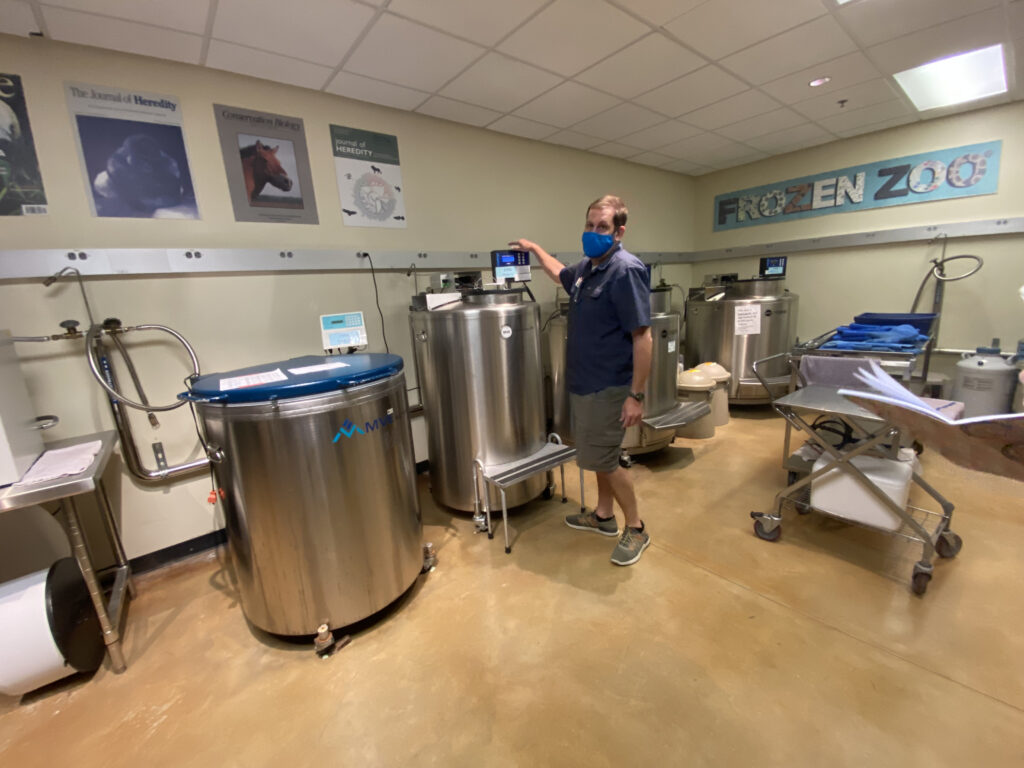
As a reproductive scientist, Dr. Tubbs' goal is to produce more wildlife, especially endangered species. As the SDZWA is a non-for-profit organization, a portion of the Zoo’s proceeds come back to the program to fund research such as Dr. Tubbs’ at the Beckman Center for Conservation Research. Any memberships, snacks or toys purchased at the Zoo and the Safari Park create financial security for the research program. Even something as simple as buying lunch at the Zoo helps fund the research branch of SDZWA, which is not as visible to the public but is highly important to the Zoo’s conservation mission. For example, Dr. Tubbs helps monitor the Frozen Zoo in the Beckman Center, which contains frozen tissues and cells that are kept in tanks with liquid nitrogen. This is the largest and most diverse frozen bank in the world with 10,451 individual tissues from 1,218 species as of October 18, 2021. If you want to help support his research, you can educate yourself and others about the SDZWA’s conservation message and raise awareness about threats to wildlife such as poaching and habitat destruction. If you would like to learn more about Dr. Tubbs’ reproduction research, you can use this link here: https://science.sandiegozoo.org/reproductive-sciences.

Today, the northern white rhino population is down to the last two rhinos on Earth. Many people consider this animal as already extinct due to the two rhinos being female and therefore unable to reproduce to save the population. The northern white rhino is native to Africa, where they play a major role as grazers by contributing to the biodiversity of vegetation. Their biggest threat is poaching due to the high demand for their horns, which are seen as status symbols and believed to have medicinal benefits. However, the Conservation Genetics and Reproductive Science groups at the Beckman Center are currently working on alternate ways to reproduce the northern white rhinos’ population and save them from complete extinction. Multiple methods are being studied and tested to hopefully find a solution for the northern white rhinos. For example, artificial insemination, in which sperm samples from northern white rhinos are being used in the effort to reproduce an embryo, could eventually lead to a successful birth. Researchers are the only possible solution to preserve the northern white rhino population and they are facing a series of challenges to succeed, yet they continue their work for the sake of wildlife conservation. People may still continue to support rhinos by donating to organizations dedicated to rhino conservation efforts, such as the International Rhino Foundation (https://rhinos.org/) and Helping Rhinos (https://www.helpingrhinos.org/).
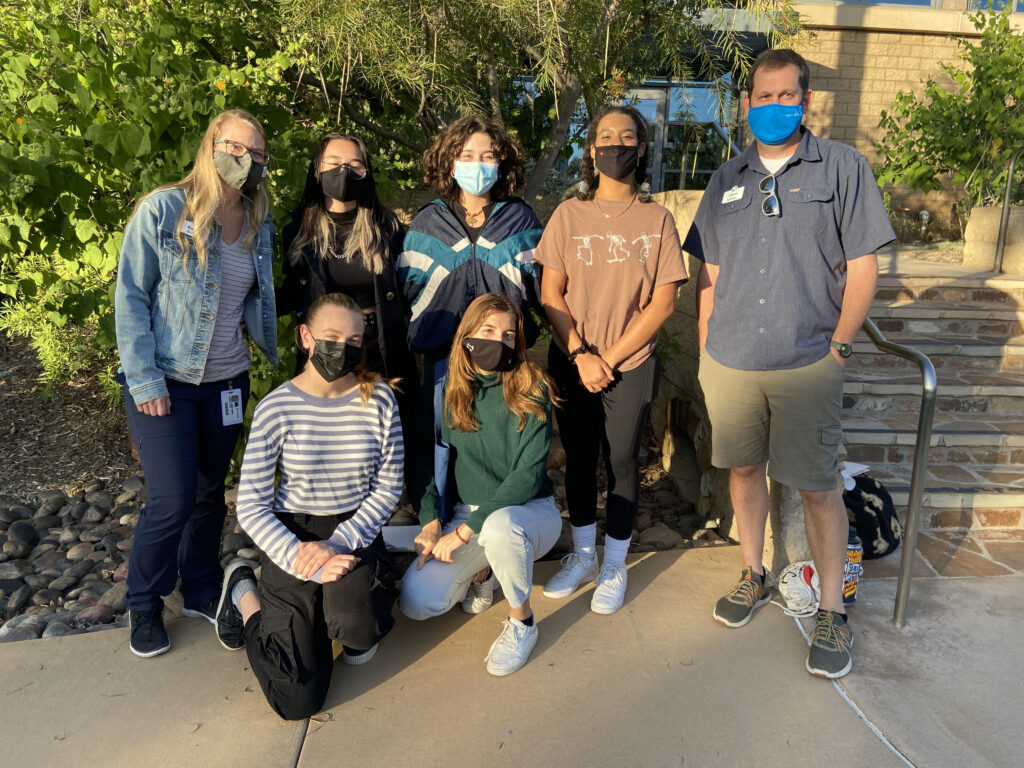
On this enlightening day, interns truly beheld the vital role of Dr. Tubbs and Mrs. Felton in reproductive sciences. Their diligent work in developing methods to measure interactions between environmental chemicals and hormone receptors that regulate endocrine function are important to increasing the reproductive success among species, especially for those that are endangered. The interns were captivated with this work in the labs and loved the Frozen Zoo and the plethora of material within. Dr. Tubbs and Mrs. Felton truly help contribute to the SDZWA’s mission with their work helping species reproduce successfully, one baby at a time.
Week Five, Fall Session 2021




